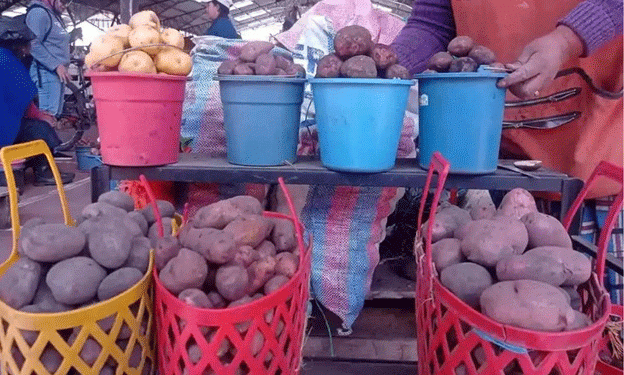In recent months, the agricultural landscape in Ecuador, particularly in the province of Chimborazo, has been dramatically transformed by intense rainfall. The increase in precipitation has had far-reaching effects on potato production, leading to significant price hikes and highlighting the ongoing challenges faced by farmers and agricultural professionals.
The Impact of Heavy Rainfall on Potato Production
Chimborazo, known for its potato production, has been hit hard by severe weather conditions this year. According to Ecuador’s National Institute of Agricultural Research (INIAP), the heavy rains have caused widespread damage to potato crops across the region (INIAP). This year’s rainfall has been notably higher, with average annual precipitation levels in Chimborazo reaching 1,200 mm, compared to the typical 800 mm (World Bank). These excessive rains have led to waterlogging, increased risk of disease, and hindered the planting and harvesting processes.
As a result of these adverse conditions, the price of potatoes has surged. At the beginning of the year, the price for a quintal (100 pounds) of potatoes was approximately USD 10 (Ecuadorian Ministry of Agriculture). Today, the price has risen to over USD 30, with high-quality varieties reaching up to USD 35 per sack due to the reduced supply and increased costs of agricultural inputs (El Comercio). In Riobamba, a city within Chimborazo, the price of standard Chola potatoes is around USD 25 per quintal, while larger, premium varieties are sold for up to USD 35 (El Universo).
The Economic Ramifications of Rising Potato Prices
The significant increase in potato prices has both positive and negative implications for different stakeholders. For farmers, the higher prices can mean increased revenue in the short term. However, this revenue boost is tempered by the challenges of damaged crops and increased costs for pest control and other inputs. According to FAO, the cost of agricultural inputs, including fertilizers and pesticides, has risen by 20% this year, exacerbating the financial strain on farmers (FAO).
For consumers, the sharp increase in potato prices means higher food costs. The World Food Programme reports that rising food prices disproportionately affect low-income families, leading to increased food insecurity (World Food Programme). In Riobamba, the price of smaller quantities of potatoes, such as small baskets sold for USD 2 to USD 7, reflects the broader trends in the potato market (La Hora).
The Role of Pests in Potato Production Challenges
In addition to weather-related issues, pests are a significant threat to potato crops. Several pests have been exacerbating the problems faced by farmers in Chimborazo:
- White Grub (Gusano Blanco): These larvae damage potato tubers, creating galleries that compromise both yield and quality. The Agricultural Pest Management Research Center reports that white grubs have been particularly problematic this year, with increased infestations due to the moist conditions (Pest Management Center).
- Potato Moth (Polilla de la Papa): This pest attacks the leaves, stems, and tubers, leading to secondary rot and decreased crop quality. Research from University of Cuenca indicates that potato moth populations have surged due to the favorable conditions for their development (University of Cuenca).
- Potato Aphid (Pulgón de la Papa): These insects transmit viral diseases such as Potato Leafroll Virus, which negatively impacts potato yields. According to Agricultural Research Service, aphid populations have increased, compounding the challenges faced by farmers (ARS).
- Nematodes: These soil-dwelling pests damage potato roots, causing deformities and reducing yields. A recent study from The International Potato Center highlights that nematode infestations are more severe in wet conditions (International Potato Center).
- Colorado Potato Beetle (Escarabajo de la Papa): This beetle defoliates plants and reduces potato yields. The Crop Protection Network reports that control measures for this pest are necessary but often costly and labor-intensive (Crop Protection Network).
The current situation in Chimborazo illustrates the complex interplay between weather events, pest pressures, and economic factors in agricultural production. The dramatic rise in potato prices reflects not only the impact of heavy rains but also the ongoing battle against pests and the rising costs of agricultural inputs. For farmers, this means navigating a challenging environment where short-term gains from higher prices are offset by increased costs and risks.
As the agricultural community looks for solutions, a focus on integrated pest management, improved crop resilience, and efficient use of resources will be crucial in addressing these challenges and securing a stable future for potato production in Ecuador.

